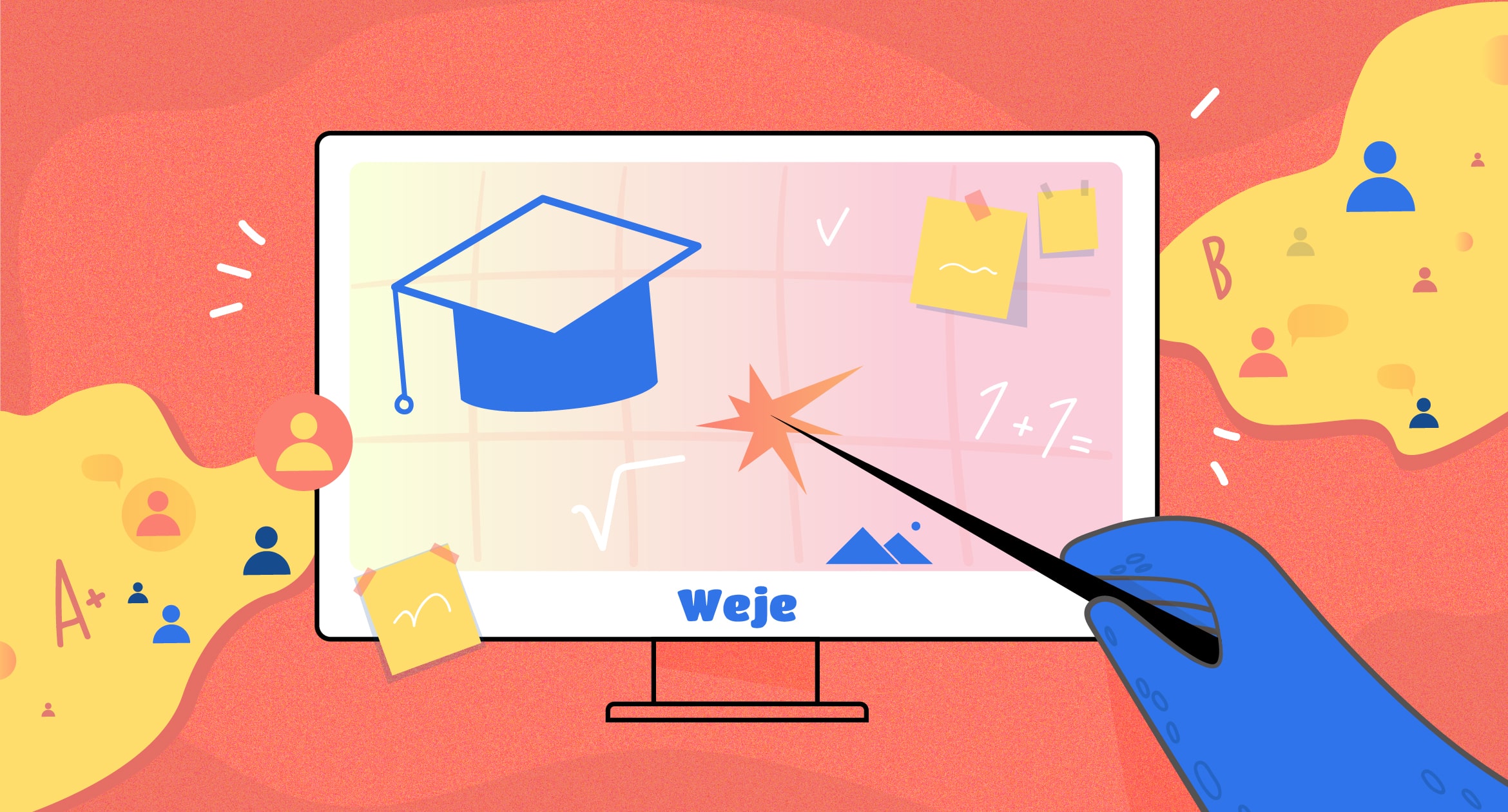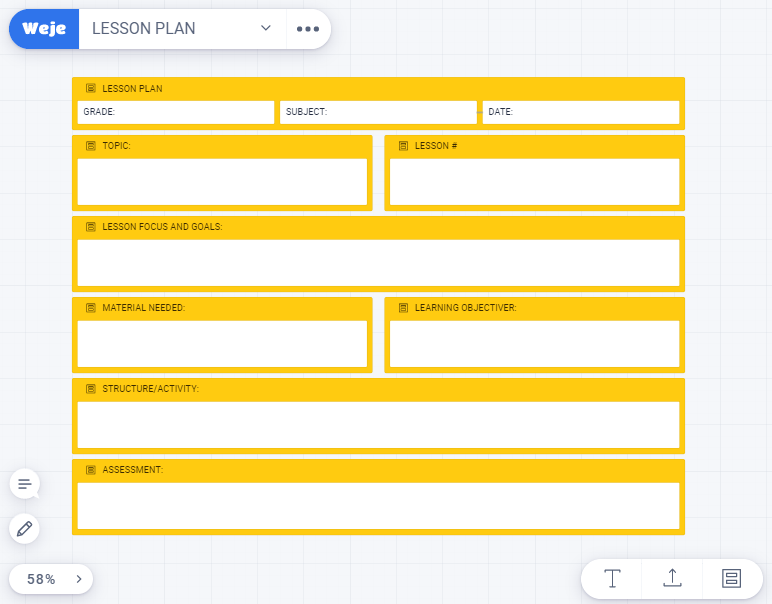Whether you explain the topic to students from an elementary or high school, you want your speech to be logical, telling, attention-grabbing, and fitting to the learning objectives, right? It follows that you need a well-thought-out lesson plan – a scenario or roadmap for both you and kids or teens.
Teaching plans shouldn’t be perceived as mere formalities, wrote once upon a time and forgotten on the bookshelf to gather dust until the end of time. If you know how to write lesson plans quickly and sure-handed, these will become the “secret spice” of your spectacular teaching.
What should lesson plans include?
Identify the learning objectives
Start with defining desired takeaways from the class. Be mindful that students usually forget up to half of what they’ve learned just 1 hour after the exercise ends. So, don’t pack the plan with contents for too much. Instead, focus attention on key learning goals.
If you’re not sure about how to write lesson plan objectives clearly, these simple tips might help:
- decompose objectives of the course
Divide overall goals into quarterly, monthly, and weekly sets of topics, and plan every lesson, accordingly.
- set straightforward outcomes from learning
After the lecture, students shall come up with a concrete skill or piece of new knowledge. For example, be able to define a term, classify concepts, use formulas, etc.
- make sure tasks are achievable
Be realistic about how much time it takes to explain and carefully elaborate subjects with students. And plan the lesson’s pace with that time estimation in mind.
- watch over equal opportunity
Students have different memory and attention, so set learning objectives that can be met by the majority of the group.
Required resources
Distinct disciplines require different sets of supportive means. Teaching resources may include tangible and non-materials things – everything from microscopes and test tubes to printed books, scientific reports, and online presentations. When creating a lesson plan, you should think in advance about what resources you might need and in what quantity.
Plan the specific learning activities
Interaction during the lesson is essential. A monotonous and one-note lecturer’s speech doesn’t contribute to memorizing information, for sure. Learning activities can help to engage students with the topic and encourage them to develop hard and soft skills. For example, incorporating fun free crossword puzzles into lessons provides a creative way to enhance vocabulary, problem-solving, and focus in an interactive format.
When planning activities, it is important to create their logical sequence and estimate the time for each. Also, there should be a balance between the interactive and theoretical part of the lesson so that students can get the essential amount of “on paper” base which they can refer to later.
The most common learning activity is the game. This is a smart way to grab students’ attention and improve their problem-solving and communication skills. Other helpful interactive forms include simulation, quiz, case study, brainstorm, group discussions, and reflection. The latter is especially useful for Humanities, e.g. Literature or Philosophy. Students get time to re-think the topic explained and can come across all 6 processes of cognition.
Incorporate visuals
People perceive around 90% of information with their eyes, so visualization is an important component of every lesson. Especially when it comes to scientific fields of study, like Biology or Physics. Visuals are something taking time to prepare, but once made, they can be reused countless times in the future.
You can use pre-designed sets, e.g. AI presentation maker or models, or manage to make them together with students during the lesson. For example, you can explain a historical event, e.g. a battle and siege, by asking students to draw a plan with dates on a whiteboard. They will have to put forward assumptions about the course of events and, ultimately, will remember the information better.

What do lesson plans look like?
There are many lesson planning examples with templates that you can find on the Internet because there’s no conventional way to list a lesson plan. This can take whatever format – from a few sticky notes to a neat folder with papers. Moreover, a lesson plan may be in the form of digital boards with linked documents and external resources that teachers can share with their students.
If you need some benchmark of a well-structured lesson plan, here is a template that you can print and use.
A few recommendations regarding the structure:
- stick to a single-page format
The lesson plan should be your on-hand tool, so don’t turn it into a big book with wordy sentences.
- include identifying marks, like “date” or “lesson #”
You may need to refer to previous plans at some point, so make sure you can distinguish them.
- add the “Assessment” chapter
It’s important to review what students have learned, so prepare the list of screening questions for each lesson.
What makes an effective lesson plan?
Predict possible problems in the lesson
You shall foresee and prevent possible troubles that may occur during the lesson. These may be organizational issues, e.g. insufficient number of printed assessment papers or handouts, or perception difficulties. For example, when they aren’t interested in the activity or can’t manage to get the task done in the group.
You can line up all possible issues using “Gagne’s Nine Events of Instruction” model. This is a “golden standard” for teachers to connect with students, so you can list difficulties in relation to each of the 9 events and take respective precautions.
Assessments and follow up
Test students’ knowledge and take time to follow up so that they can summarize what they learned and see gaps. Include various assessment methods, like written tests, collective projects, quizzes, and others.
Also, bear in mind the forgetting curve. Humans forget up to half of the new information they’ve learned unless they recall it soon after. So, to strengthen students’ memory, cover all lesson’s objectives and include the repeating of the previous lesson, as well.
As to feedback, you can combine class or group-level discussions with one-to-one or peer discussions. Also, it may be worth asking students to review their knowledge by themselves. Using a K12 assessment platform at this stage can take your evaluation process further by providing data-driven insights into student performance. It helps educators pinpoint learning gaps, personalize instruction, and ensure that assessments align closely with curriculum goals, making follow-up more effective and meaningful.
Don’t neglect using helpful tools
Plan your lessons with Weje, and make learning simple and joyous for everyone. We made that educators and students can use our digital whiteboards for free – with no limits to quantity or time restrictions.
With online canvases, lesson planning for teachers won’t be a laborious duty. You sign up with an email, navigate to the online board, name it as to your course, link, upload, or copy & paste, learning materials, and share the board with the class. It’s that simple.
Teachers can modify lesson plans at any moment, e.g. group information into cards, mind map ideas, use online sticky notes for important minutes, draw, and leave comments. Changes can be instantly viewed by the board’s collaborators, so students will always be aware of the recent updates.
Published: September 13, 2021






